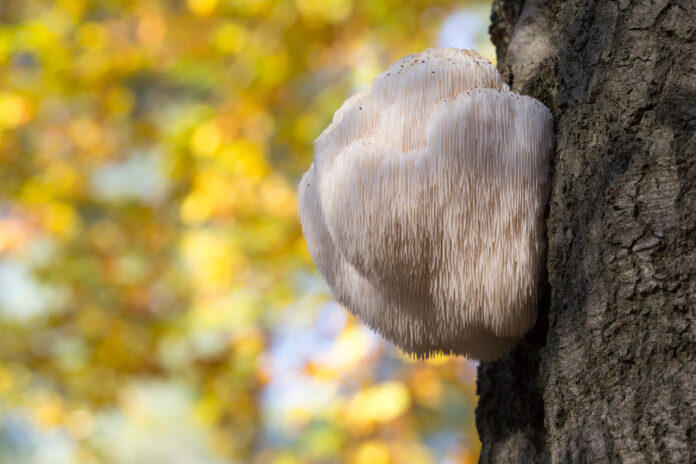9 nutrients for canine dental disease

From antioxidants to zinc, a whole range of nutrients can help keep your dog’s teeth and gums healthy and strong and prevent dental disease.
Dental disease can cause pain and interfere with your dog’s ability to chew. But did you know it can also affect the rest of his body? Periodontal disease is a source of chronic inflammation, which in turn is associated with illnesses such as arthritis and cancer. It is also a constant source of infection, and can even infect the valves of the heart. Luckily, a wide variety of nutrients can be used to help fight and prevent dental disease in your dog, thereby keeping him not only more comfortable, but healthier as well.
Nutrients that can be used to help fight dental disease
1. Antioxidants
Antioxidants offer helpful anti-inflammatory action. They work best centrally, not topically, so you don’t have to try to rub them on your dog’s gums. Two of the best are vitamins E and C. Make sure you give your dog the type of C that also has bioflavonoids, which work together with the vitamin to make it even more effective. Rose hips are a good source of both vitamin C and bioflavonoids. When it comes to vitamin E, 50 IU per day is plenty for a small dog (small dogs are especially prone to dental disease). Vitamin C works better when used twice a day — 125 mg twice a day works well for that same small dog. These vitamins work best when both are given, not just one or the other. Alternatively, you can use grape seed extract as a source of flavonoids, at 15 mg to 30 mg per day for a 10 lb dog.
2. Zinc
Zinc is especially important for strong gums, and it can inhibit plaque – 0.5 mg per day is enough for a small dog, or 50 mg for a really big guy. You may also be able to find a 5% zinc mouthwash you can squirt in his mouth. Be sure, however, that it does not contain xylitol, which is poisonous to dogs.
3. Vitamin A
Vitamin A is also important for healthy gums. Too much can cause problems, though, so it is often easiest to give your dog a food that’s high in A or beta carotene. Liver and fish oil have vitamin A, and carrots have a lot of beta carotene. If you want to give a pill form, about 500 IU of beta carotene per day can help a 10 lb dog.
4. Fish oil
Fish oil itself can help with gum disease. It’s not just the vitamin A, but the two Omega-3 fatty acids, EPA and DHA — 300 mg per day for a 10 lb dog is helpful for this and many other things, especially arthritis and cancer.
5. Coenzyme Q10
Coenzyme Q10 can be beneficial, especially for highly inflamed, bleeding gums; 30 mg per day works well for a 10 lb dog.
6. Folic acid
Folic acid can also help with gingivitis, at 200 mcg per day for a 10 lb dog.
7. Calcium
Calcium levels can be an issue if you are feeding your companion a homemade diet. Be sure there is enough calcium in his food; if he doesn’t get enough, he will absorb it from his own bones. This weakens the area where the teeth attach in the jaw. Keep in mind that it won’t do any good to add extra calcium to a diet that already has enough. In fact, this can increase the chance of bladder or kidney stones. But in a diet with insufficient calcium, adding this mineral will strengthen the bones, and not just the ones in the jaw. Be sure to work with a veterinary nutritionist to make sure your dog’s diet has the proper amount of calcium.
8. Bromelain and papain
Bromelain and papain are two protein-dissolving enzymes that work to weaken the protective film in the plaque. Bromelain is found in pineapple juice. Papain comes from the papaya; in fact, you can use papaya if you can’t find papain. Proteolytic enzyme capsules are meant to be swallowed to help digestion. To help dental health, they will work best if applied right where they are needed — in the mouth. Open a capsule, mix the contents with water, and squirt it into your dog’s mouth on the areas you most commonly see plaque. Some enzymes sold in capsules are “enteric coated” which means they are coated with a substance that does not break down and release the capsule contents until they reach the intestines. That’s not the type you need.
8. Probiotics
Probiotics do not play as big a part in helping the mouth as they do further down the digestive tract. The bacteria in probiotics are not the ones found in high numbers in the canine mouth. However, probiotics are not harmful, and it is possible they may temporarily displace some of the bad bacteria. They definitely contribute to good intestinal tract health. Just don’t count on them alone for good dental health.
Understanding what’s going on in your dog’s mouth
It is easier and cheaper to prevent dental disease than to fight it once your dog’s teeth are compromised. The best way to do this is to know what’s going on in his mouth. The canine mouth differs in some ways from human mouths, but the end result of inadequate dental care is similar.
Human saliva tends to be acidic, which means it eats away at teeth and contributes to cavities. Canine mouths are usually neutral or alkaline. In dogs, alkaline mouths contribute to a faster buildup of plaque (the soft stuff) and tartar (the hard stuff) than in humans. The bacteria that live in plaque and tartar contribute to gum disease. If there is enough plaque and tartar, they can change the mouth from alkaline to acidic; this means the dog’s mouth can experience the worst of both worlds, going from too alkaline to too acidic.
There are hundreds of strains of bacteria in the mouth. Your dog’s oral bacteria are mostly different from the bacteria found in your own mouth. You can’t make your dog’s mouth sterile, but there are some things you can do to decrease the number of bacteria, keep his mouth more neutral, and decrease inflammation.
Bad bacteria in the mouth multiply especially fast when food remnants build up and create soft tartar. Starchy foods that stick to the teeth are a big problem, but any soft food that stays around the teeth is bad news. The bacteria that grow in those remnants produce a film that protects them from the immune system. Bacteria change as plaque or tartar buildup gets worse. Acid-producing bacteria increase in number at the gum line. Acid can dissolve calcium compounds, which isn’t good considering teeth are dense with calcium. The acid can eat away at the teeth, especially at their bases.
Controlling plaque and tartar buildup
Some ways to address this issue include:
- Decreasing the amount of food remnants in the dog’s mouth
- Changing his mouth from acid or alkaline to neutral
- Decreasing the number of bad bacteria
- Decreasing inflammation
- Dissolving the film generated by the bacteria.
Your dog needs something every day that will decrease the leftover food and plaque in his mouth. Gentle brushing, with a dog toothbrush (not a human one) or a small brush that slips over your finger is a big help, if your dog cooperates. If he won’t accept brushing, some dental chews will also do the job, though not as thoroughly as brushing.
Baking soda is a buffer. It can neutralize acid and also correct a mouth that is too alkaline. It is also just abrasive enough to help remove plaque. Make a paste of baking soda and rub it gently along the sides of your dog’s teeth, especially down at the bases. Bacteria that thrive in acid do not do well in a more alkaline environment, so this can also decrease the number of bacteria.
Some dogs are lucky enough to have almost no dental disease. Others, especially small ones, seem to be plagued by it. The more you do to prevent tooth and gum problems, including the use of dental health-supportive nutrients, the better off your dog’s oral and overall health will be.



